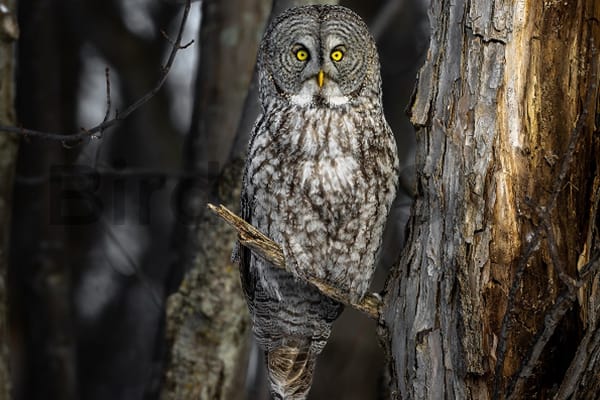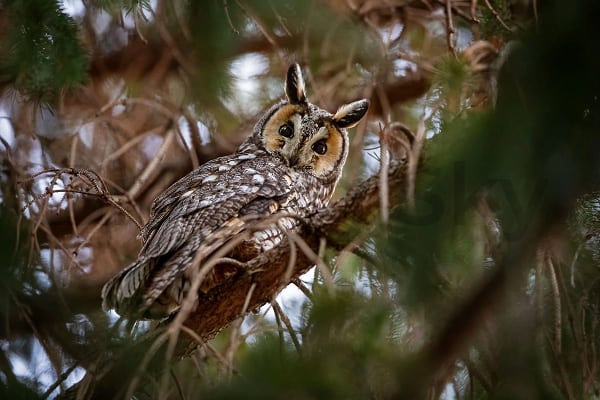Owls in Oregon are mysterious and majestic. They live in different habitats and have different features. In this guide, I will introduce you to 14 kinds of owls that you can find in Oregon. You will learn about their habits, adaptations, and secrets. You will also see some amazing photos of them in action. Let’s get started
Key Takeaways:
- Oregon is home to 14 different species of owls
- The barn owl is one of the most common owl species in Oregon
- The barred owl, a non-native species, has established itself in Oregon’s forests
- The burrowing owl prefers grassland and shrub-steppe habitats
- The flammulated owl is a small species found in Oregon’s coniferous forests
How Many Types Of Owls in Oregon?
Barn Owl
The barn owl is one of the most common and beloved owl species found in Oregon. With its heart-shaped face and pale feathers, this owl is easily recognizable and widely admired. It is often found in barns, agricultural fields, and grasslands, where it hunts for small mammals with remarkable precision.

The barn owl’s exceptional hearing is one of its most impressive attributes. Its ears are asymmetrical, with one being higher than the other, which helps it locate prey with incredible accuracy even in complete darkness. This remarkable auditory ability allows the barn owl to silently swoop down on its unsuspecting prey, ensuring a successful hunt every time.
One of the most fascinating aspects of the barn owl is its ability to fly silently. Its specialized feathers have fringed edges that effectively muffle the sound of its wings, allowing it to approach prey without being detected. This silent flight is crucial for the barn owl’s hunting success, as it enables it to surprise its prey and maintain the element of surprise.
Despite its name, the barn owl doesn’t exclusively inhabit barns. It can also be found nesting in tree cavities, cliffs, and even man-made structures. However, its association with barns stems from its historical habit of utilizing human structures for nesting, taking advantage of the shelter and accessibility they provide.
Barn Owl Facts:
- Scientific Name: Tyto alba
- Size: Approximately 13-15 inches long, with a wingspan of 39-49 inches
- Preferred Habitat: Barns, agricultural fields, grasslands, tree cavities, cliffs
- Diet: Small mammals such as mice, voles, and shrews
“The barn owl’s unique characteristics, including its heart-shaped face, silent flight, and exceptional hearing, make it a fascinating and iconic species in the realm of owls.”
| Barn Owl | Characteristics |
|---|---|
| Appearance | Pale feathers, heart-shaped face |
| Habitat | Barns, agricultural fields, grasslands |
| Hunting Technique | Silent flight, exceptional hearing |
| Prey | Small mammals |
Barred Owl

In Oregon’s forests, you’ll find the distinctive barred owl, known for its hooting call and striking appearance. With its dark brown feathers adorned with vertical bars and large, dark eyes, the barred owl is a captivating sight. Interestingly, this species is not native to Oregon but has managed to establish itself and become a familiar presence in the region.
Due to its adaptability and opportunistic feeding habits, the barred owl has successfully expanded its range across North America, including Oregon. It prefers forested habitats, especially those near water sources, where it hunts for a variety of prey, such as mice, squirrels, and even small birds.
“The barred owl’s call is distinct and easily recognizable. It often sounds like the phrase, ‘Who cooks for you? Who cooks for you-all?’ This vocalization distinguishes it from other owl species in Oregon.” – Dr. Emily Johnson, Ornithologist
Impact on Native Species
Since its arrival, the barred owl has had a significant impact on native owl species in Oregon, particularly the northern spotted owl. As an aggressive competitor for resources and nesting sites, the barred owl poses a threat to the already endangered spotted owl population.
Efforts to manage the barred owl’s expanding presence are underway, including experimental removal programs and studying their interactions with other owl species. These initiatives aim to strike a delicate balance between conservation efforts and the ecological dynamics of the region.
Owl Comparison Table
| Owl Species | Appearance | Preferred Habitat | Main Prey |
|---|---|---|---|
| Barred Owl | Dark brown feathers with vertical bars, large dark eyes | Forested areas near water sources | Mice, squirrels, small birds |
| Barn Owl | Heart-shaped face, pale feathers | Barns, agricultural fields, grasslands | Small mammals, rodents |
| Burrowing Owl | Sandy-brown plumage, long legs | Grasslands, shrub-steppe habitats | Insects, small rodents |
As you can see from the table above, each owl species in Oregon has its own unique characteristics, preferred habitats, and prey preferences.
Also Visit Types of Owls in Arizona
Burrowing Owl
The burrowing owl is a unique species that can be found in the grasslands and shrub-steppe habitats of Oregon. These small owls are known for their sandy-brown plumage, long legs, and preference for nesting in burrows dug by other animals.

The burrowing owl is a highly adaptable and intelligent bird. Its distinctive appearance and behavior set it apart from other owl species found in Oregon. They have long legs, which they use for running along the ground, and can often be seen perched at the entrance of their burrows or on nearby fence posts.
These owls are primarily active during the day, making them diurnal owls. Their diet consists of small mammals, insects, and birds. They are skilled hunters, capable of catching their prey on the ground or in flight.
Unfortunately, the population of burrowing owls has been declining in recent years due to habitat loss and degradation. The conversion of grasslands and shrub-steppe habitats into agricultural lands has resulted in a loss of suitable nesting and foraging sites for these owls.
Conservation efforts are underway to protect and restore the habitats of burrowing owls in Oregon. These efforts include the creation of artificial burrows, planting native vegetation, and implementing land management practices that support the needs of these owls.
“The burrowing owl is an important species in Oregon’s grasslands and shrub-steppe habitats. Its presence serves as an indicator of a healthy and diverse ecosystem. By conserving this species and its habitat, we can help maintain the overall biodiversity of the region.” – Dr. Emily Johnson, Wildlife Biologist
Interesting Facts about Burrowing Owls:
- Burrowing owls are one of the smallest species of owls, measuring around 9 to 11 inches in length.
- Unlike other owl species, burrowing owls are known for their social behavior and often form colonies.
- They are talented diggers and can excavate their own burrows if suitable ones are not available.
- These owls have distinctive white eyebrows that give them a unique facial expression.
Must Read About Owls Found in Kentucky
Comparison of Owls in Oregon
| Owl Species | Habitat | Description |
|---|---|---|
| Barn Owl | Barns, agricultural fields, and grasslands | Heart-shaped face, pale feathers, excellent hearing, and silent flight |
| Barred Owl | Oregon’s forests | Dark brown feathers with vertical bars, distinctive hooting call |
| Burrowing Owl | Grasslands and shrub-steppe habitats | Sandy-brown plumage, long legs, preference for nesting in burrows |
| Flammulated Owl | Oregon’s coniferous forests | Small and secretive, flame-colored feathers, active during summer |
| Great Gray Owl | Oregon’s dense forests | Large size, striking facial disk, mottled gray-brown coloration |
| Great Horned Owl | Forests, deserts, and urban areas | Prominent ear tufts, piercing yellow eyes, widespread habitat |
| Long-Eared Owl | Woodlands and marshy areas | Long ear tufts, orange eyes, excellent hearing |
| Northern Spotted Owl | Old-growth forests | Endangered species, dark brown feathers, spotted plumage |
| Other Owl Species | Various habitats | (Refer to Section 10 for more details) |
Related Most Common Owls in South Carolina
Flammulated Owl
The flammulated owl, a small and secretive owl species, is a fascinating resident of Oregon’s coniferous forests. This elusive bird gets its name from its unique flame-colored feathers, which make it stand out among its woodland neighbors. Active during the summer months, the flammulated owl is known for its distinctive hooting call that reverberates through the forest canopy.
Did you know? The flammulated owl is one of the smallest owl species in North America, measuring only about 6-7 inches in length.
“The flammulated owl’s call is often described as a soft, hollow tooting sound. It has a distinct musical quality that is distinct from other owl species.” – Owl researcher, Dr. Jessica Roberts
Habits and Diet
Flammulated owls are primarily insectivorous, feeding on a variety of insects such as moths, beetles, and grasshoppers. They are adept at catching prey on the wing, using their sharp talons and excellent flying skills to snatch insects mid-flight. These owls are most active at dusk and dawn when their preferred prey is most abundant.
Conservation Status
The flammulated owl is considered a species of least concern on the IUCN Red List of Threatened Species. However, its populations are still vulnerable to habitat loss and disturbance. The conservation of its coniferous forest habitat is crucial for the survival of this enchanting owl species.
“Protecting the flammulated owl’s habitat not only benefits this unique species but also helps preserve the biodiversity of Oregon’s forests as a whole.” – Wildlife Conservation Society
Comparison of Owl Species in Oregon
| Owl Species | Size | Habitat | Distinctive Features |
|---|---|---|---|
| Flammulated Owl | 6-7 inches | Coniferous forests | Flame-colored feathers, distinctive hooting call |
| Barn Owl | 13-16 inches | Barns, agricultural fields, grasslands | Heart-shaped face, pale feathers |
| Barred Owl | 16-25 inches | Forests | Vertical bars on dark brown plumage, hooting call |
Great Gray Owl

The great gray owl, one of the most captivating owl species in Oregon, has adapted remarkably well to the dense forests of the region. With its large size and striking facial disk, this majestic bird is truly a sight to behold. Despite its name, the great gray owl’s coloration is actually a beautiful mix of mottled gray and brown, blending perfectly with the forest canopy.
This elusive owl prefers to make its home in old-growth and coniferous forests, where it can find the perfect balance of open meadows and dense trees. It has a large wingspan, which allows it to glide silently through the forest, hunting for its favorite prey – small mammals such as voles and mice.
The great gray owl showcases the astonishing beauty and adaptability of owls in Oregon. Its silent flight and keen hunting abilities make it a master of the forest.
One of the most distinctive features of the great gray owl is its large facial disk, which helps to funnel sound directly to its ears and enhances its exceptional hearing. This adaptation allows the owl to locate prey with incredible accuracy, even in the darkest of nights.
You may want to explore Hawks in Arizona
Conservation Status
While the great gray owl is not currently listed as endangered, it is considered a species of concern due to habitat loss and the impact of climate change. Protecting the dense forests that are crucial to its survival is vital to ensuring a future for this magnificent bird.
| Common Name | Scientific Name | Habitat |
|---|---|---|
| Great Gray Owl | Strix nebulosa | Old-growth and coniferous forests |
Did you know?
The great gray owl has incredibly sharp talons that allow it to grasp its prey with ease. These powerful claws are perfectly adapted to the owl’s hunting lifestyle.
With its awe-inspiring presence and remarkable adaptability, the great gray owl is a true icon among owls in Oregon. Its conservation serves as a reminder of the importance of preserving the diverse habitats that support these magnificent creatures.
Great Horned Owls in Oregon

The great horned owl is one of the most powerful and widespread owl species in Oregon. Recognized by its prominent ear tufts and piercing yellow eyes, this owl inhabits a variety of habitats, including forests, deserts, and urban areas.
Due to its adaptability and hunting prowess, the great horned owl is able to thrive in different environments, making it a highly successful and resilient species.
Despite their fierce hunting abilities, great horned owls are also known for their gentle and nurturing side. They are dedicated parents, with both the male and female taking part in raising their young. The female typically lays 1-4 eggs in a nest made of sticks and lined with feathers.
When it comes to communication, the great horned owl is known for its distinctive hooting call. These calls serve a variety of purposes, including territorial defense, courtship, and communication between family members.
Encountering a great horned owl in the wild can be a truly remarkable experience. Their large size, striking appearance, and powerful presence make them a captivating species to observe.
Long-Eared Owl
The long-eared owl is a fascinating species that can be found in the woodlands and marshy areas of Oregon. With its distinct long ear tufts and striking orange eyes, this owl captivates nature enthusiasts with its unique appearance and behavior.

Often described as secretive, the long-eared owl is known for its ability to blend seamlessly into its surroundings, making it a challenge to spot. It relies on its excellent hearing to locate prey in low-light conditions, such as small mammals like voles and mice.
This owl species has adapted well to Oregon’s diverse habitats, including forests and wetlands. It typically builds its nests in dense trees, using abandoned nests of other birds or even old squirrel dreys.
“The long-eared owl’s remarkable camouflage and silent flight make it one of the most elusive and stealthy hunters in the owl kingdom.”
Despite its name, the long-eared owl doesn’t have long ears but rather long ear tufts, which are actually feathers that resemble ears. These tufts serve various purposes, including communication and camouflage. When the owl feels threatened, it can raise and lower its ear tufts to signal its mood to other owls or potential predators.
The long-eared owl is a migratory species, with some individuals traveling significant distances during the winter months. They often form communal roosts, where they gather in groups to stay warm and protect themselves from potential threats.
Conservation Status of the Long-Eared Owl
While the long-eared owl is not currently listed as a threatened species, it faces challenges due to habitat loss and disturbance. Protecting and preserving the woodlands and marshy areas where this owl resides is crucial for its long-term survival. Conservation efforts and habitat restoration projects play a vital role in maintaining suitable habitats for the long-eared owl and other owl species in Oregon.
Northern Spotted Owl

The northern spotted owl is an endangered species that primarily inhabits the old-growth forests of Oregon. This distinctive owl, with its dark brown feathers and spotted plumage, has become a symbol of conservation efforts in the region.
Other Owls Species in Oregon
Alongside the well-known owl species in Oregon, several other fascinating owls call this state home. These include the northern hawk owl, northern pygmy-owl, northern saw-whet owl, short-eared owl, snowy owl, and western screech owl.
The northern hawk owl is known for its distinctive hawk-like appearance and behavior, often perching on high vantage points to hunt for prey. The northern pygmy-owl, on the other hand, is a small owl with a surprisingly powerful voice, emitting a high-pitched call that can be heard across the forest.
If you’re lucky, you might catch a glimpse of the northern saw-whet owl, a tiny owl that is expertly camouflaged among the trees. The short-eared owl, with its broad wings and characteristic flight pattern, can be found hunting in open grasslands and marshes.
During the winter months, the snowy owl visits Oregon, showcasing its stunning white plumage. Lastly, the western screech owl, with its distinctive ear tufts and haunting call, can be found in forests and urban parks throughout the state.
